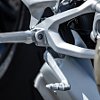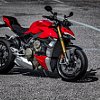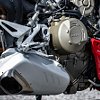In a normal world, I would have written this article on a trans-Atlantic flight, adrenaline glands drained and palms sore from having wrangled Ducati’s new Streetfighter V4 around a racetrack. Instead, I’m typing at my kitchen counter — stuck at home like most of the world, including Ducati personnel — having just watched an online presentation that served as a stand-in for the global press launch that Ducati canceled due to the coronavirus pandemic.
A YouTube broadcast certainly isn’t as revealing as actually riding a new bike, but we did learn a few things, namely that the Streetfighter is indeed just a stripped-down Panigale superbike. Technical differences are few and mostly aimed at improving on-road comfort and functionality, which should make the Streetfighter the most enjoyable and reasonable way to experience Ducati’s incredible Desmosedici Stradale engine.
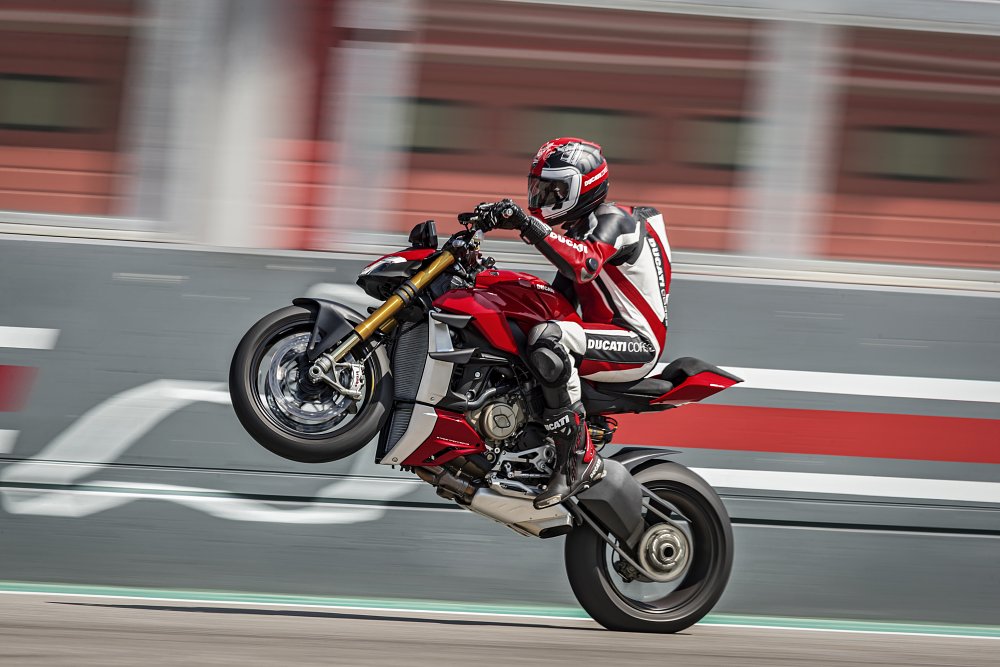
A Panigale for the street
As the camera pans to Alessandro Valia’s laptop screen while the test rider presents from his living room in Italy, we learn that the Streetfighter’s seat is about a half inch taller than the Panigale’s (33.3 inches compared to 32.7) thanks to additional padding. That ought to be better than the board that was presented as a perch on the original 1098-based Streetfighter that I rode in 2009. Said seat also appears to be mostly flat, which means it’s less likely to drive your delicate bits into the back of the tank like that first Streetfighter did.
The knurled-aluminum footpegs are lower by an unknown distance, adding a little more legroom, while a handlebar takes the place of the Panigale’s clip-ons. Similarly, we don’t know how much higher it is exactly. Based on pictures, however — and I’m guesstimating here — the grips on the ‘Fighter look to be about four inches higher than the superbike’s, and the ‘bar seems to have a conventional bend (the 1098’s did not, and strained your wrists as a result).
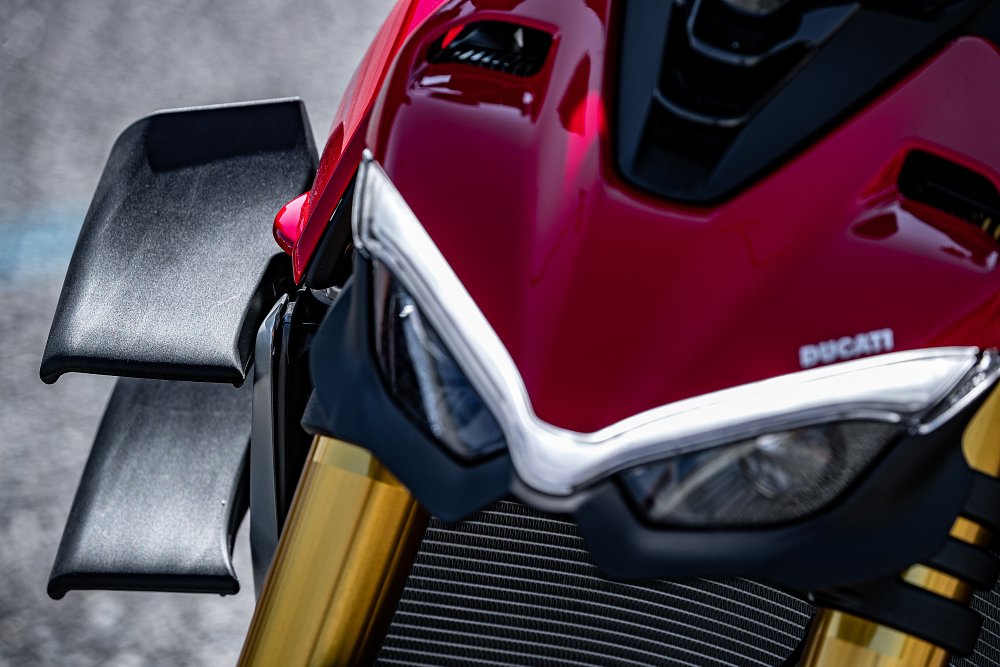
It’s weird not to have specs as simple as bar height, but given how hard-hit Italy has been by this pandemic and the fact that the Ducati factory has been closed since March 14, I feel like we should be grateful for any fresh information. I wish the world was in a different state and I was able to tell you exactly what the riding position feels like, but alas, I can only suggest that it’s likely better than before and better than what the Panigale offers.
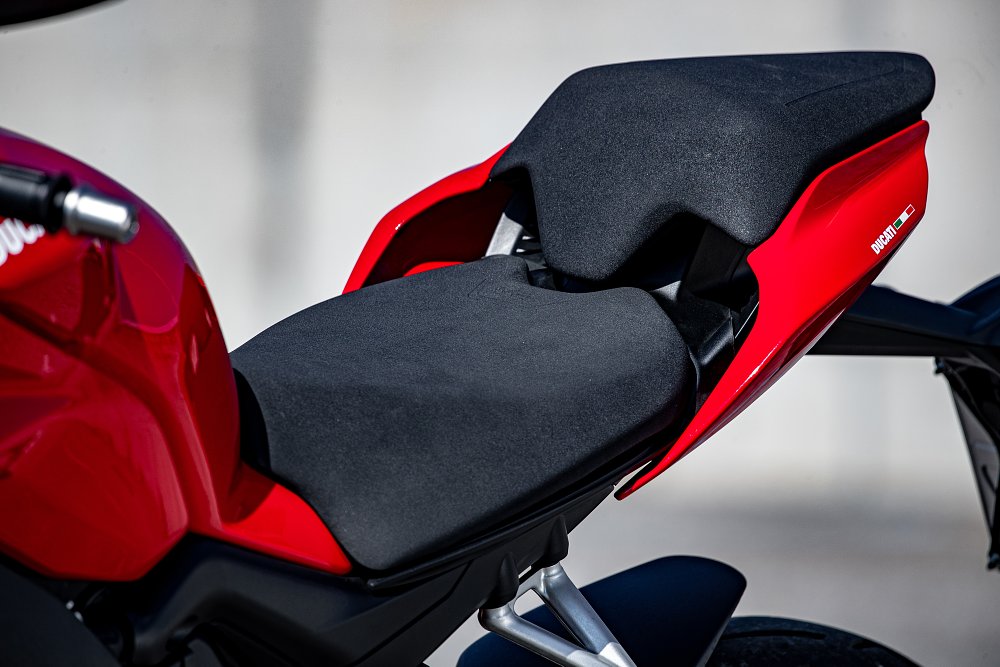
Things are supposed to be better for the passenger, as well, thanks to less of a height variance between the pillion’s perch and the pilot’s saddle. If you’ve ever seen someone clinging to the back of a sport bike, you know how miserably high (and insecure) they look.
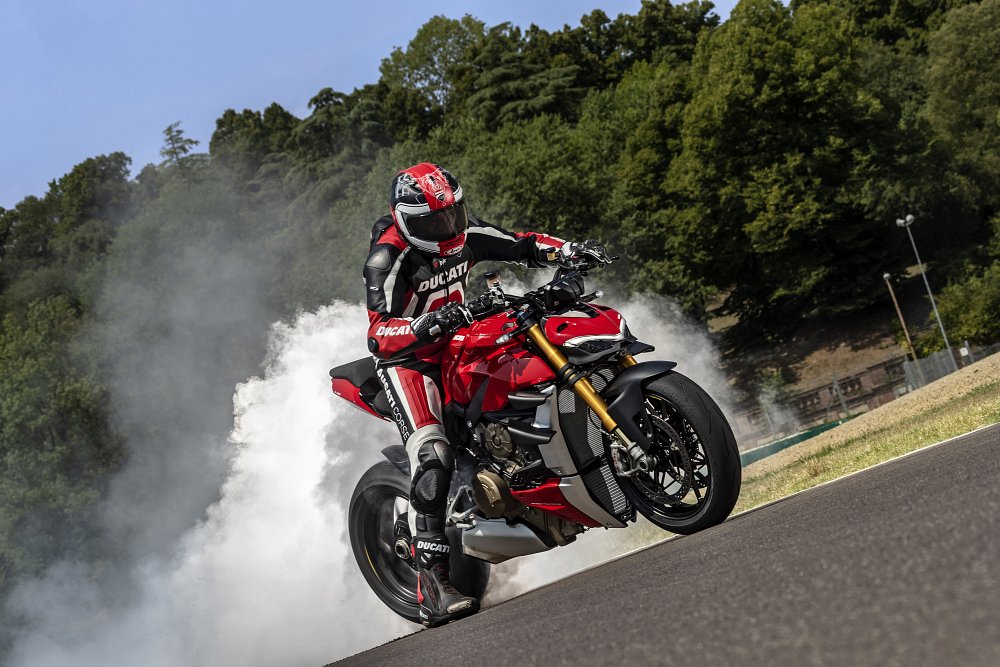
Chassis changes
There’s a front frame, as on the Panigale, but it’s cast from aluminum rather than magnesium. Similarly, the rear subframe that bolts to the V-four’s rear cylinder head is steel instead of aluminum. All changes are likely aimed at saving costs at the expense of some added weight.
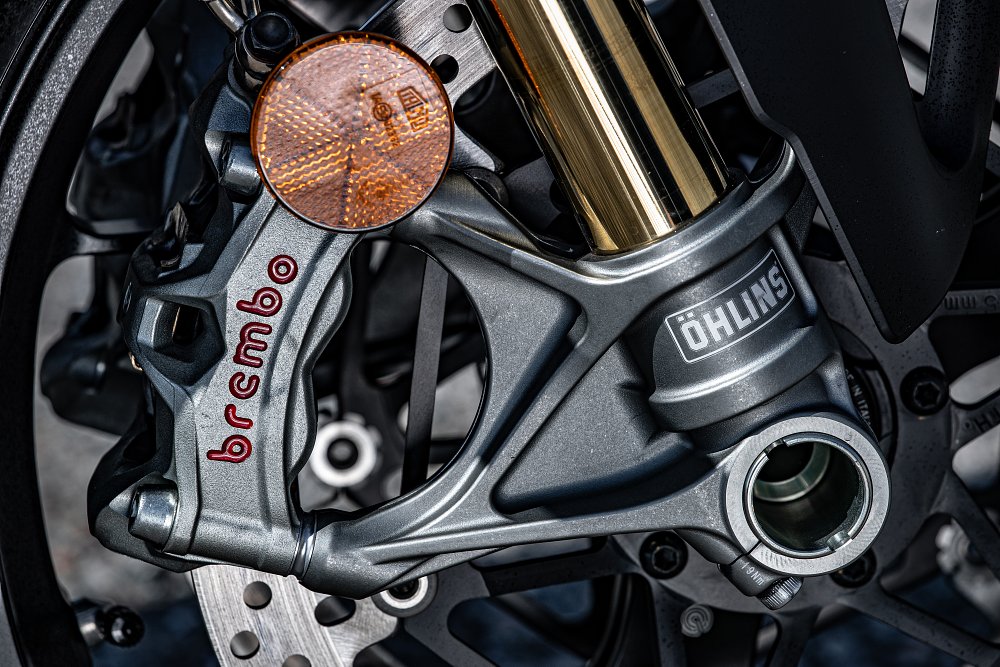
Naked bikes aren’t often as stable as their full-faired counterparts since they have a higher center of gravity and the rider is out in the breeze. The typical recipe sees the wheelbase lengthened and the steering geometry relaxed to increase stability. And while the Streetfighter has a 15 mm longer swingarm, Ducati left the steering geometry superbike-steep, and instead introduced MotoGP-derived wings to improve high-speed stability.
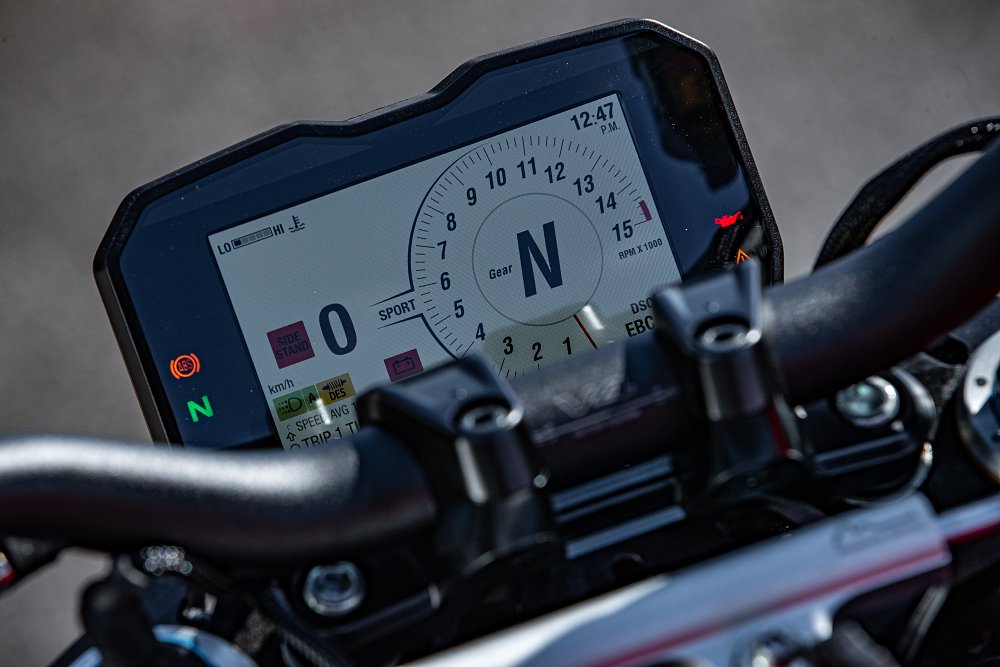
It’s a naked bike, with wings
Ducati wowed the world when it debuted wings on its MotoGP race bikes during the 2010 season, and we saw them sprout from the flanks of the V4 R in 2019. Now they’re on all the v4s including the Streetfighter, though this design uses a set of “biplane” wings to help reduce the bike’s overall width. After all, it would be pretty embarrassing to bang your MotoGP-derived aerodynamics against a car’s mirror or fender while navigating urban traffic.
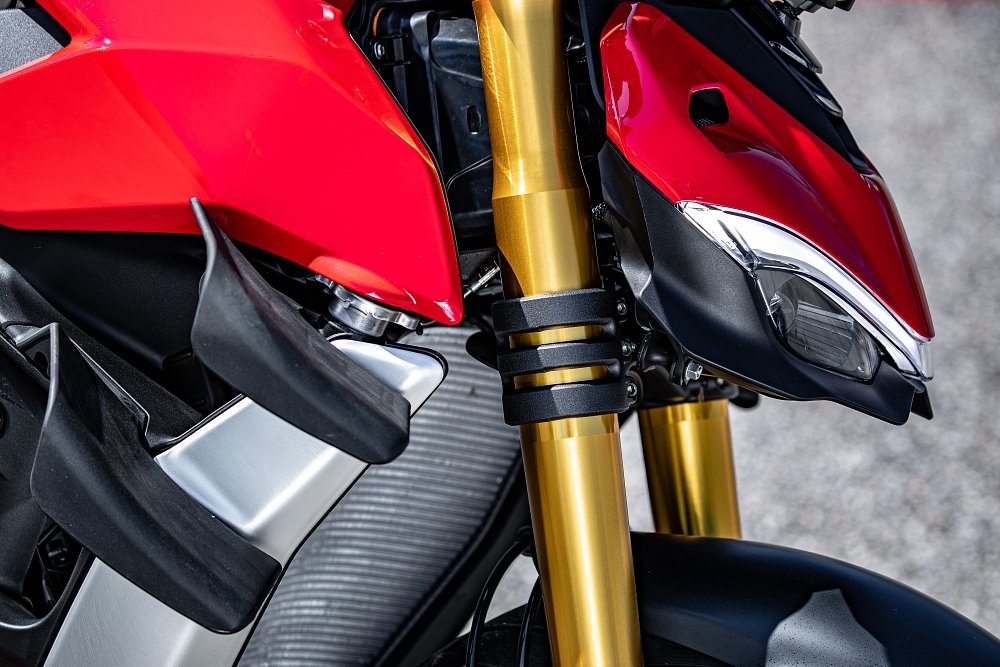
The whole idea is that the wings provide downforce over the front end, which reduces the tendency to wheelie (which is probably pretty easy to do with all that power), increases stability, and improves front-end traction during high-speed braking. According to Valia, downforce starts to build at just 30 mph and there’s about 60 pounds acting on the front end at 168 mph.
From Ducati’s perspective, the wings boost high-speed stability without compromising steering behavior like slackening the head angle or adding trail would.
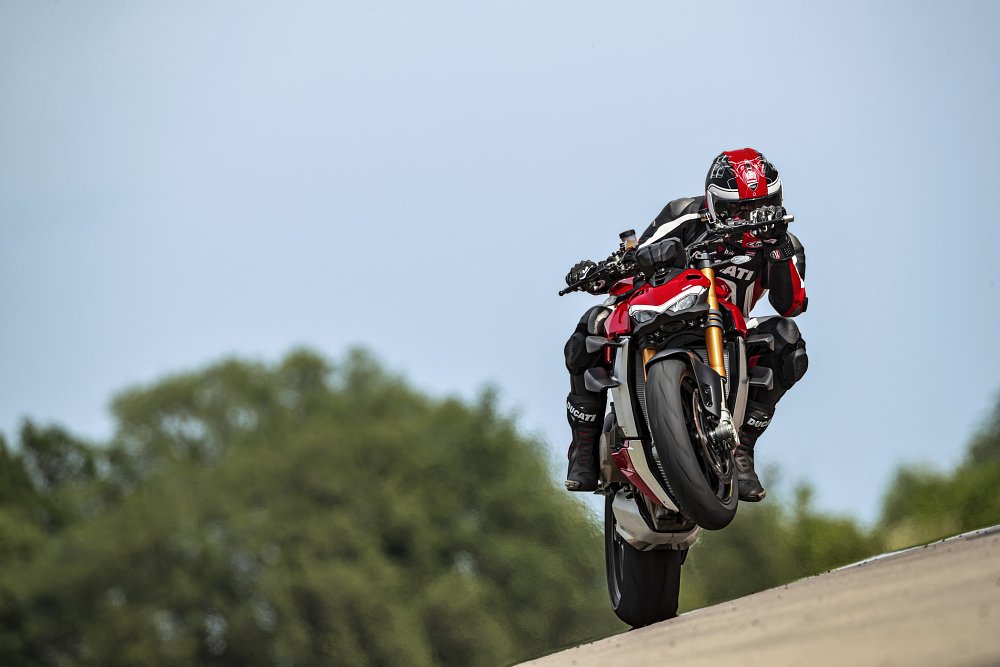
Bragging rights
Back to the Streetfighter being an undiluted, naked version of the Panigale. The 1,103 cc V-four that powers the Streetfighter V4 is “practically unchanged with respect to the Panigale,” though peak power is reduced from 214 horsepower and 91.5 foot-pounds of torque on the Panigale to 208 horsepower at 12,750 rpm and 90.4 foot-pounds at 11,500 rpm on the Streetfighter. Staggering figures for a street bike, any way you slice it, made more immediate by shorter final-drive gearing.
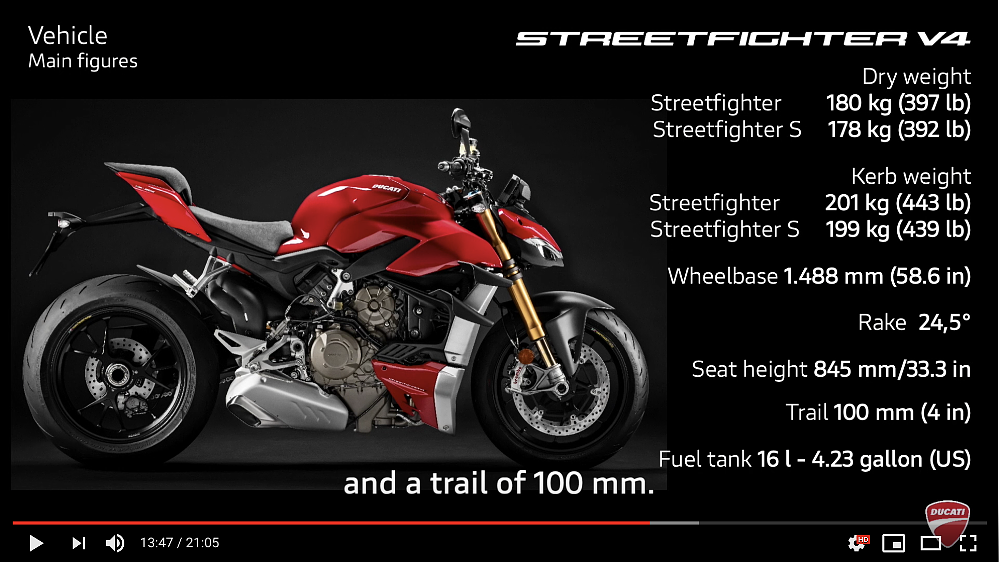
To tame all that performance, the Streetfighter has the same rider-aid package as the Panigale, meaning electronic multi-level everything. Valia spoke extensively about ride-by-wire revisions that are meant to smooth throttle response, especially from off-to-on throttle. Torque is also electronically limited in first through fourth gear in an effort to maximize acceleration while keeping the front wheel on the ground. Data is conveyed via a 5.5-inch TFT display that’s unfettered by a windscreen or bodywork.
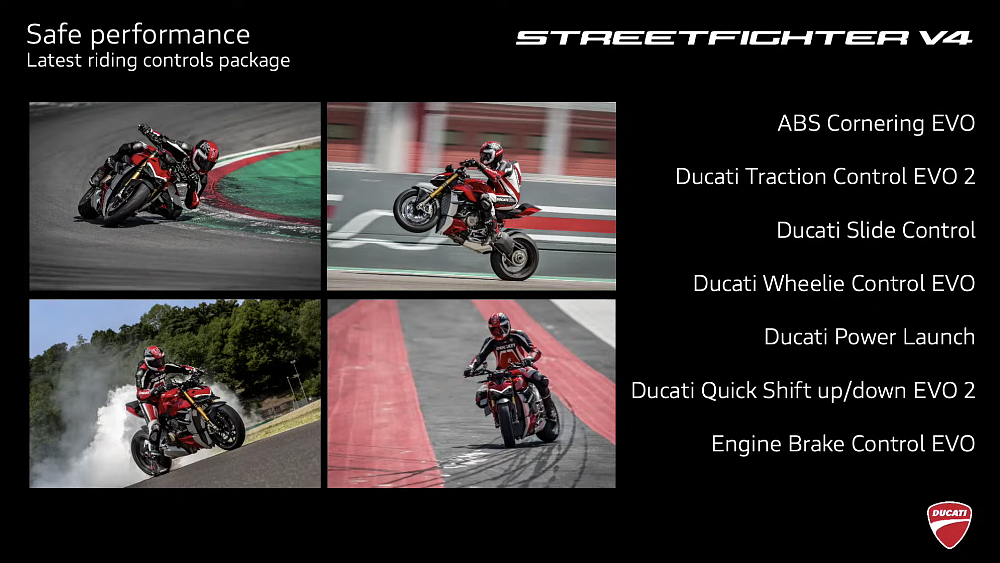
If I’d had a chance to view the Streetfighter in person, I’m sure I would have ogled the engine extensively. So much more of the technical bits are exposed for you to enjoy on this naked bike. It’s easy to see that the engine is an integral part of the chassis, and more of its magnesium covers are on display. The Desmosedici Stradale is truly a work of art, and deserves to be on display. In the Streetfighter, it is.
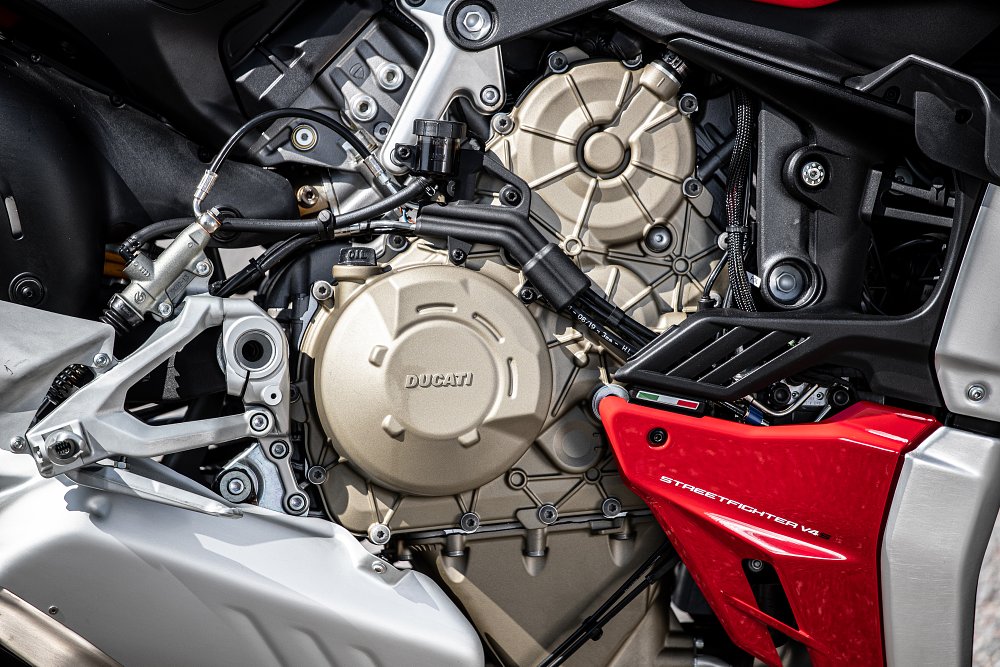
Options and pricing; and availability?
As with the Panigale V4 and V4 S, you can get your Streetfighter in two trim levels. The Streetfighter V4 base model costs $19,995, weighs a claimed 443 pounds ready to ride, and has conventional Sachs suspension and cast-aluminum wheels. The Streetfighter V4 S is $23,995, tips in at 439 pounds, and has Öhlins electronic suspension and forged-aluminum Marchesini wheels.
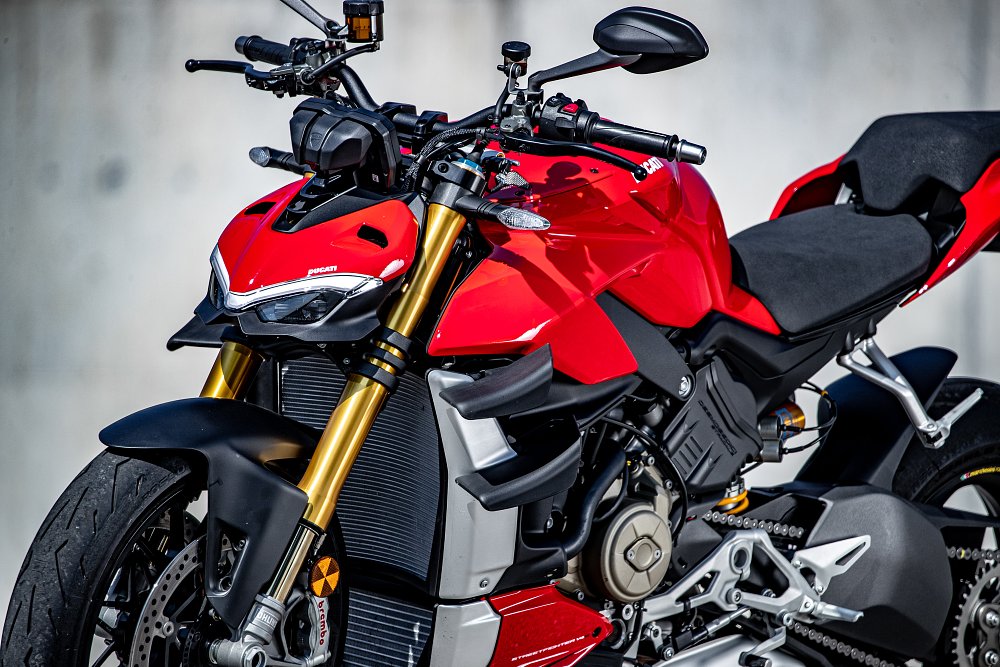
As for when riders will get to enjoy this streetworthy V4, that’s a huge unknown. Bikes were due to arrive in U.S. dealerships in April, but that’s obviously going to be delayed. Ducati’s main production facility is likely to remain closed for some time, so even if bikes have been produced, they won’t get crated or shipped. Ducati is quick to point out that spare parts and accessories for all models are still available, since the distribution of those items is handled by a separate facility that, as of now, is still open for business.
For a company that normally hosts meticulously choreographed and elaborate events, this digital press launch is a serious shift and showcases how dire the situation is in Italy. Surely everyone at Ducati, and everyone around the globe, is eager for things to return to normal.

 Membership
Membership



